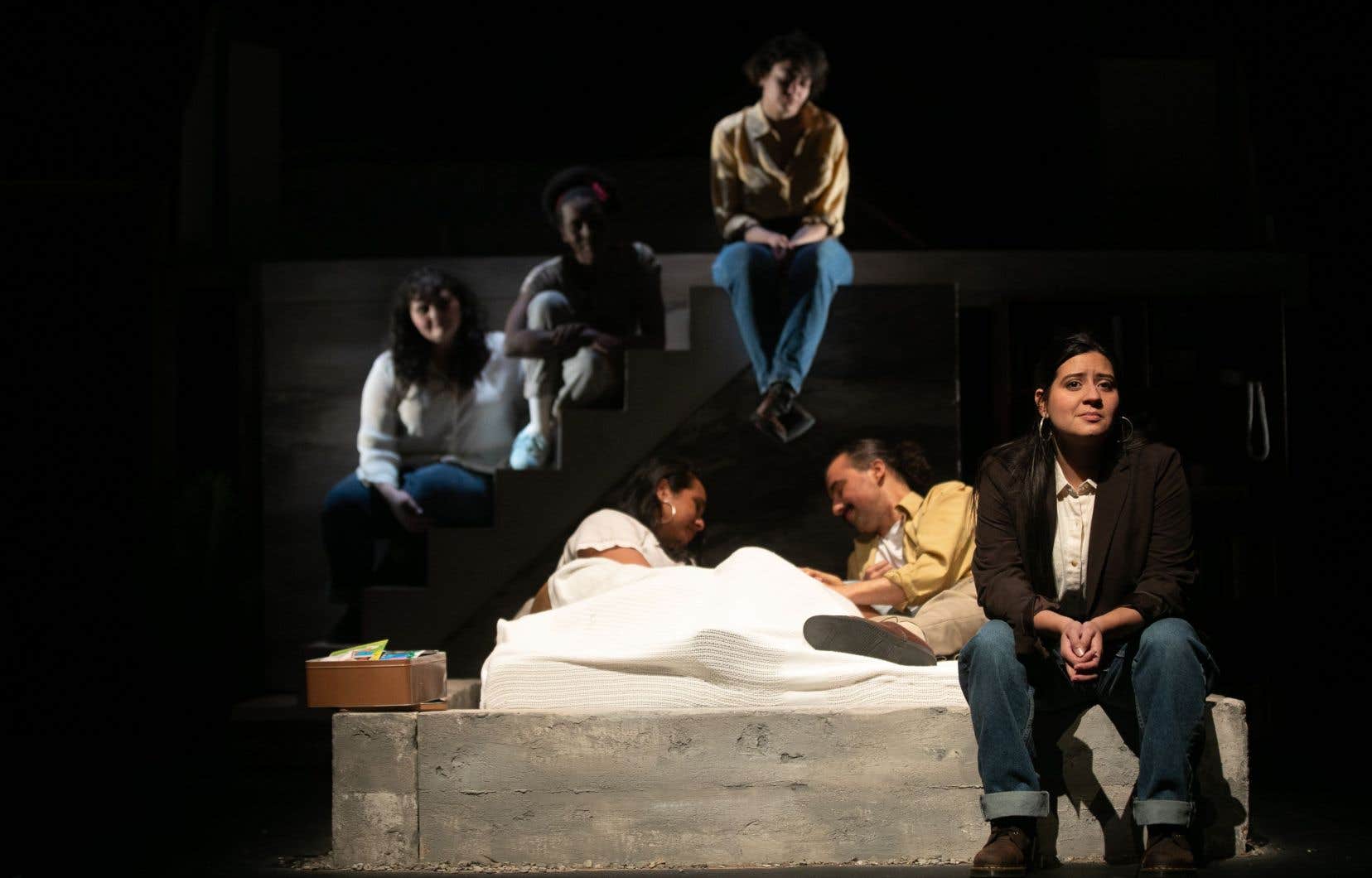A little self-sufficient beast, a novel uses words as its sole vehicle. Judging a first theatrical adaptation of Where I hide at La Bordée, it is therefore trying to see what the direction of Guillaume Pepin (The HLA project).
The show naturally takes up the main lines of the successful novel by Caroline Dawson (Remue-ménage, 2020), Literary Prize for college students 2022. Michel Nadeau’s adaptation makes the cuts imposed by a format of one hour and forty hours, sticking to the main episodes: flight from Chile and the Pinochet regime, arrival at Canadian customs in December 1986.
After an opening where one of the actresses (Kathy-Alexandra Retamal Villegas) provides the narration, and where the danger of a delivery stuck to the novel looms, however, the mechanism imagined by the director emerges. Rather, the six actresses will share the voice of the narrator, of the character – “We are Caroline”, they seem to chant, sometimes in unison. Thus Madame Thérèse’s French class, thus the first humiliations linked to skin color: the actresses take turns, each bringing their own nuance to the exercise, colored with passages in Spanish.
In a minimalist setting, then more extensive as the years pass and the young girl takes root, the energies of the actresses overlap: singular notes which, far from causing a hiatus, rather blur the cards of the story, fleshing out the character , energize the livery.
Debt
Two elements will resonate strongly: the “becoming Quebecois” of this woman born in Valparaíso in 1979, first. Halfway between an obvious love and critical insight, Caroline Dawson has a privileged point of view on this language, this new embraced culture — Passe-Partout and Marie Eykel, Room in town and Réjean Ducharme, 107.3 Cité Rock-Détente and other cultural references feature throughout the show.
A second element will appear in thin successive layers, linked to the completely different trajectory of this girl whose parents worked two or three jobs simultaneously to provide for the family’s needs – “They torched everywhere so that we could have the luxury of being bored. »
French in his pocket, before a school career nourished in the social sciences, will provide Dawson with symbolic capital responsible for a strange gap – it is this tension, unresolved until the end, that the adaptation to La Bordée makes particularly visible . The character knows how to articulate his experience, “tell a story” and multiply the layers of meaning, the discursive passages.
The clarity of the sociological arsenal weighs less, however, than just the episodes recounted — this party at a friend’s house, for example, and the effective discovery of a distance from one’s origins. On stage, the young woman certainly appears to us eager to speak from the side of the oppressed and the margins, she who writes for “all these women in [elle] to be resurrected”… at the same time as the gap remains: this “betrayal of ascension”, hoped for by the mother nonetheless.
And the most vibrant will remain the portrait of this mother who, implicitly, manages to emerge here and there – a portrait which at the same time becomes that of a debt. Far behind, this presence will remain in the background, the discreet shadow of this woman and what she took on her shoulders: this “love of a mother that moves mountains”.
